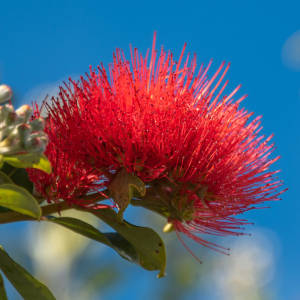Dancing in the Wind
I didn't go out today and the only thing I had really in my garden to blip about was my fuchsia. My head is feeling a lot better today and hope that continues!
Looking up about the Fuchsia's I found that the first fuchsia was discovered in the Dominican Republic in the late 17th Century by Father Charles Plumier, a missionary and botanist of that time. He named the plant Fuchsia triphylla coccinea after Leonard Fuchs, a German botanist who had died 100 years earlier. Incidentally, his name was pronounced ‘Fooks’ so perhaps we should be pronouncing fuchsias as ‘fooksias'.
With the discovery of other fuchsia species it wasn’t long before the hybridisers got to work. The varieties we see today are the result of many, many years of careful hybridising. Not all were the result of long hours of pollinating and cross pollinating or selecting the best one out of hundreds of seedlings or the long wait for the first flower to appear to see if it was unique. Quite a few were chance seedlings, the most famous one being ‘Mieke Meursing’ which was found growing on the bench under a plant of ‘R.A.F.’ It turned out to make one of the biggest impacts on the show benches ever seen. It was a delight for both the exhibitor and nurseryman. It had all the qualities needed for a show plant and it produced enough cutting material to make any nurseryman more than happy.
Nature takes over again! Fuchsias were at their peak of popularity in the Victorian times when the head gardeners of large houses grew pillars, standards and pyramids to line the driveways. One such gentleman was James Lye who was head gardener at Clyffe Hall, Market Lavington. He became a grower, exhibitor and hybridist of fuchsias and produced plants eight to ten feet high and four to five feet across the base and by 1866 was described as Champion Fuchsia Grower in the West of England. This popularity lasted up until the First World War when the greenhouses they were grown in were turned over to producing food.
After the war the interest in fuchsias continued, particularly in the U.S.A when the American Fuchsia Society was founded in 1929. Members travelling in Europe took back varieties which the breeders got to work on and produced a range of plants with bigger and better blooms. These plants were well received back in Europe and were a massive contribution to the thousands of varieties we see today. Information from here..

Comments
Sign in or get an account to comment.


